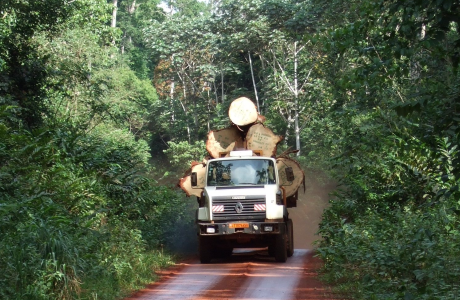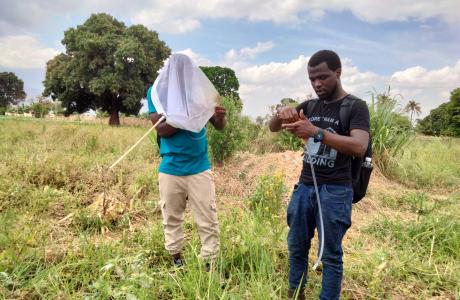Critical minerals in the Great Lakes region of Central Africa
Critical minerals such as lithium and tantalum are used in smartphones or electric cars. They are highly sought-after commodities, being indispensable in modern technologies and for the transition to green energy. The Great Lakes region in Central Africa is geologically rich in minerals that are extracted for these raw materials. Geologists from the Royal Museum for Central Africa study the formation and distribution of these minerals to promote their sustainable and fair exploration and exploitation.
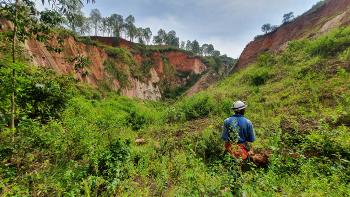
Abandoned open pit at Ntunga, Rwanda, until recently mined for tin and tantalum from weathered pegmatites. Mining and exploration currently continues in underground tunnels
© A. Borst
The Great Lakes region in Central Africa is home to many minerals rich in technological metals. For example, the region is the source of half of the world’s supply of tantalum, used in the mini-capacitors of laptops and mobile phones. Lithium and Rare Earth Elements (REE), which are used in magnets, batteries and motors, are other examples of critical minerals that are crucial to the green energy transition. Their demand is growing exponentially.
Which geological processes lead to the formation of these mineral deposits? How do different types of mineralisation and degrees of weathering influence potential extraction methods? And what is the social and environmental impact of mining activity in this area? These are important research topics for geologists from the Royal Museum for Central Africa, with a view to support sustainable and fair exploration and exploitation of these resources. This includes long-term partnerships in regional geology, the production of geological maps and capacity building for researchers, universities and geological services.
Recent research projects were initiated on the origin of two different mineralising systems that host ore deposits in Central Africa: Lithium – Niobium – Tantalum – Tin – Tungsten (Li-Nb-Ta-Sn-W) deposits associated with granites, pegmatites and quartz veins, and rare earth elements – Phosphorus – Niobium (REE-P-Nb) deposits in alkaline-carbonatite magmas.
Tin-tantalum mines in Rwanda
In February 2022, geologist Anouk Borst and PhD students Jolan Acke and Laura van der Does conducted research on pegmatites and quartz veins in tin-tantalum mines in Rwanda. Both rocks are often rich in rare and economically interesting tin and tantalum ores. The mines are also being prospected for their lithium potential.
Pegmatites are coarse-grained magmatic rocks formed from the last remnants of magma and fluids that remain after most of it has crystallised on its way up through the Earth's crust. "These 'leftovers' often contain much higher concentrations of rare metals than other rocks. Because of the intense tropical weathering, the rock is soft enough to be moved and processed without large machines. Our research tries to identify the ideal conditions, processes and ingredients that lead to the formation of mineral deposits, so that they may be located and extracted more easily and sustainably," explains Anouk Borst.
The area has been mined by many small-scale miners for decades. The quartz veins and pegmatites containing tin (in the mineral cassiterite) and tantalum (in the mineral group columbite-tantalite, also known as coltan) are excavated through vertical shafts and horizontal tunnels. The valuable minerals are then separated by hand or with water according to their specific density. The current tunnel system in the Musha mine (Rwanda), for example, reaches a depth of about 50 metres.
New drill cores from the mining company the geologists worked with during their fieldwork show that mineralised quartz veins and pegmatites run even deeper into the subsurface. From a depth of around 150 metres, the drill cores also contained unweathered pegmatites rich in the mineral spodumene, a lithium ore. These were drilled to a depth of 400 metres. The aim of the fieldwork was to take samples for mineralogical and geochemical analysis, in order to get a better view of both the regional and microscopic distribution of these metals.
Sustainable and fair
The transition to green energy and a low-carbon economy relies heavily on mining mineral resources. "But it is hugely important that the mining of these critical raw materials and the distribution of the revenues they generate are done fairly, safely, sustainably and conflict-free. Mining must bring economic and social benefits to the countries where the resources are extracted. The carbon-footprint of importing of raw materials that are sourced elsewhere must also be compensated, by the end-user", says Anouk Borst.
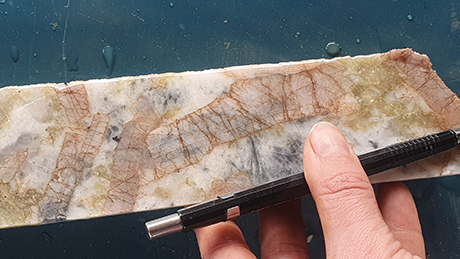 Drill core sample of an unweathered pegmatite rich in spodumene (pink lithium ore mineral) from mining company Piran Rwanda Ltd operating in the Musha and Ntunga area, Rwanda. © A. Borst
Drill core sample of an unweathered pegmatite rich in spodumene (pink lithium ore mineral) from mining company Piran Rwanda Ltd operating in the Musha and Ntunga area, Rwanda. © A. Borst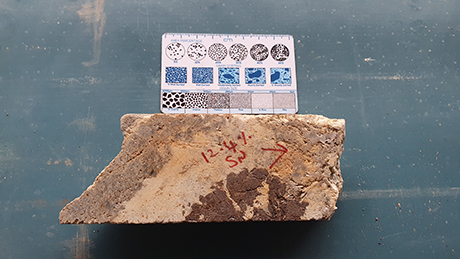 Large nugget of cassiterite (tin ore) from the shallower quartz veins in drill core from PIRAN Rwanda Ltd © A. Borst
Large nugget of cassiterite (tin ore) from the shallower quartz veins in drill core from PIRAN Rwanda Ltd © A. Borst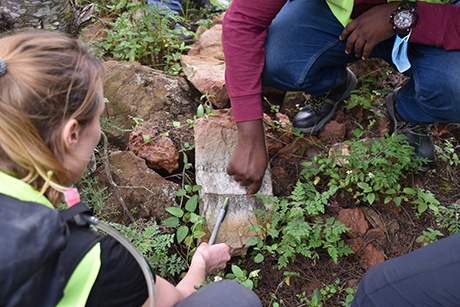 Fieldwork and sampling in the Musha-Ntunga area, mined for tin and tantalum, and prospected for lithium by Piran Rwanda Ltd. © J. Acke.
Fieldwork and sampling in the Musha-Ntunga area, mined for tin and tantalum, and prospected for lithium by Piran Rwanda Ltd. © J. Acke.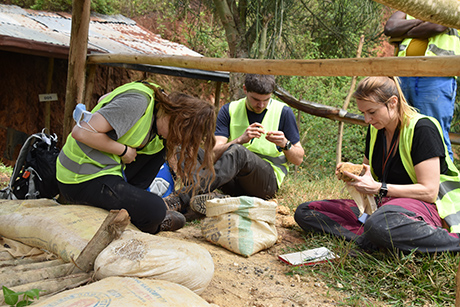 Anouk Borst (right), Jolan Acke (middle) and Laura van der Does (left) selecting samples dug up from a 50 meter deep mining shaft in the Musha-Ntunga area. © J. Acke.
Anouk Borst (right), Jolan Acke (middle) and Laura van der Does (left) selecting samples dug up from a 50 meter deep mining shaft in the Musha-Ntunga area. © J. Acke.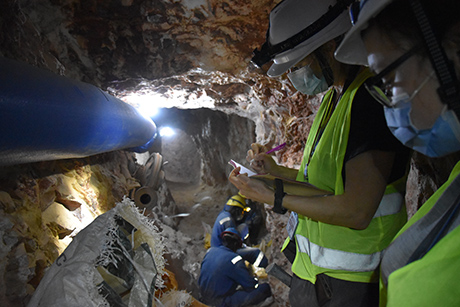 Underground sampling of pegmatites and quartz veins mined for coltan and cassiterite at Musha. The mine workers use pneumatic drills to excavate the rocks and transport the ore in wheelbarrows. © J. Acke.
Underground sampling of pegmatites and quartz veins mined for coltan and cassiterite at Musha. The mine workers use pneumatic drills to excavate the rocks and transport the ore in wheelbarrows. © J. Acke.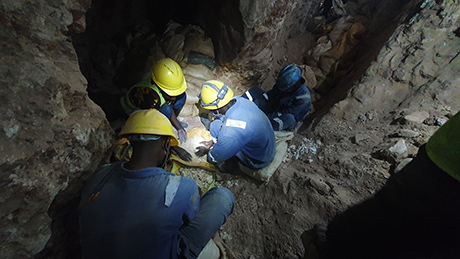 Larger nuggets of cassiterite are separated from the less dense minerals (quartz and kaolinite) by hand before further automated processing. © A. Borst
Larger nuggets of cassiterite are separated from the less dense minerals (quartz and kaolinite) by hand before further automated processing. © A. Borst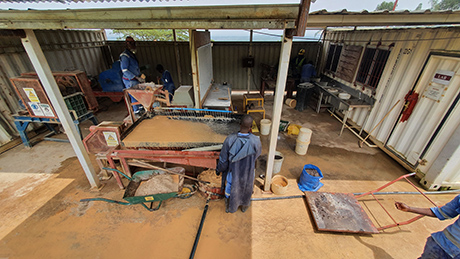 Daily concentration of the cassiterite and coltan ore by crushing it and then using a shaking/washing table, the automated version of 'sluicing', at the Musha mining site. © A. Borst
Daily concentration of the cassiterite and coltan ore by crushing it and then using a shaking/washing table, the automated version of 'sluicing', at the Musha mining site. © A. Borst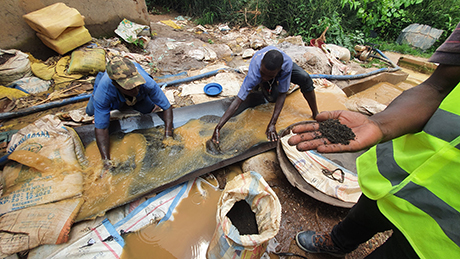 Artisanal mining operation south of the Ntunga site, where fine grained coltan and cassiterite are separated by ‘sluicing’, using water flow to wash out less dense minerals and concentrate the heavy ore minerals. Final concentrate shown in hand. © A. Borst
Artisanal mining operation south of the Ntunga site, where fine grained coltan and cassiterite are separated by ‘sluicing’, using water flow to wash out less dense minerals and concentrate the heavy ore minerals. Final concentrate shown in hand. © A. Borst